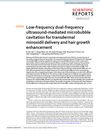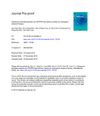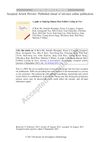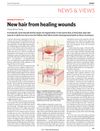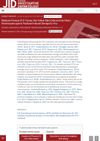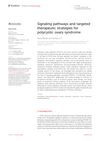Mechanical Index-Guided Low Intensity Ultrasound Therapy for Hair Regeneration: Insights from Finite Element Modeling and In Vivo Experiments
November 2025
in “
Physics of Fluids
”
low-intensity ultrasound LIUS hair regeneration androgenetic alopecia AGA finite element modeling in vivo experiments C57BL/6 mice DHT-induced alopecia ultrasound parameters acoustic pressure fields hair regrowth frequency-dependent effects mechanical effects cavitation ultrasound therapy hair loss male pattern baldness DHT
TLDR Low-intensity ultrasound can safely enhance hair regrowth by selecting the right frequency and intensity.
This study explores the use of low-intensity ultrasound (LIUS) for hair regeneration in androgenetic alopecia (AGA), utilizing finite element modeling and in vivo experiments on C57BL/6 male mice with DHT-induced alopecia. The research focused on optimizing ultrasound parameters for safety and efficacy, with simulations showing frequency-dependent effects on acoustic pressure fields. In vivo experiments demonstrated that ultrasound treatment at 150 kHz and 1 MHz enhanced hair regrowth without causing unsafe temperature increases. The study concludes that selecting the right frequency and intensity can optimize mechanical effects for hair regeneration while avoiding harmful cavitation, with future clinical trials planned to confirm these findings.







